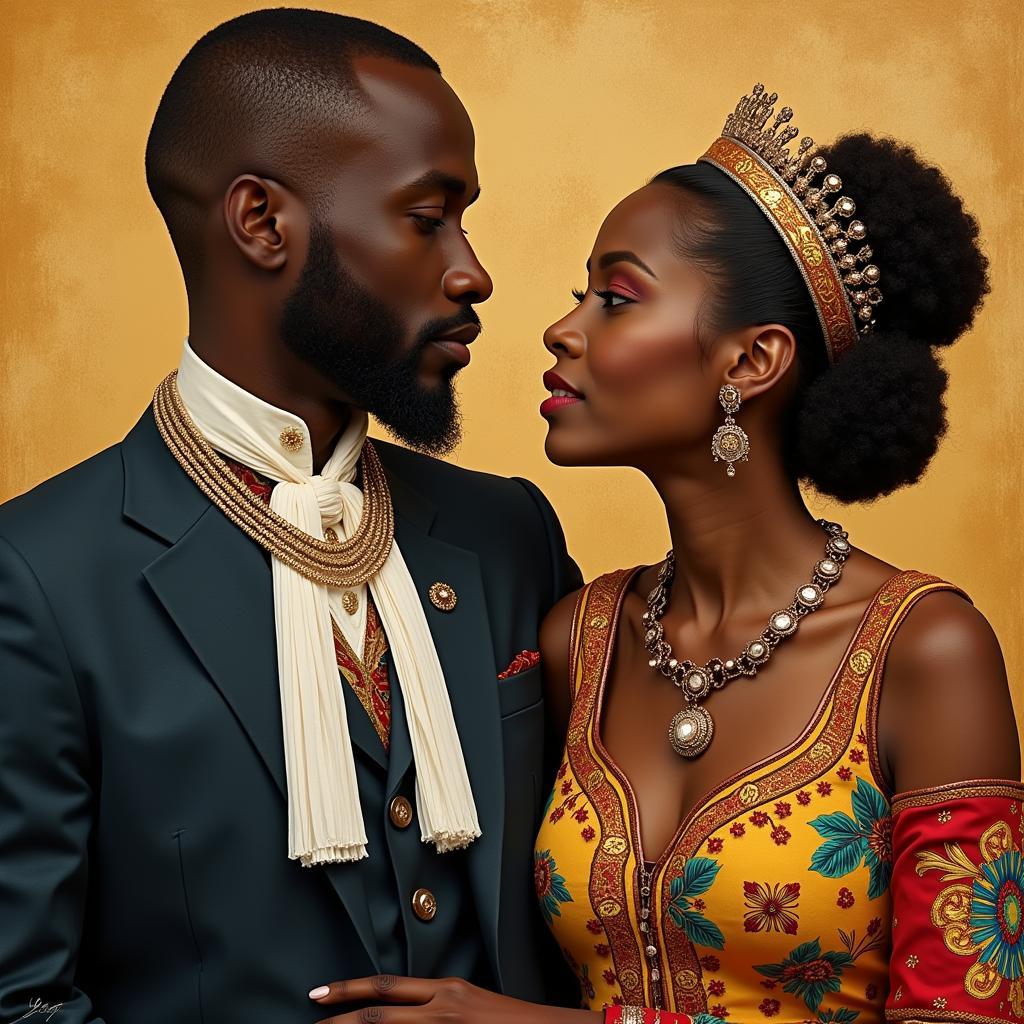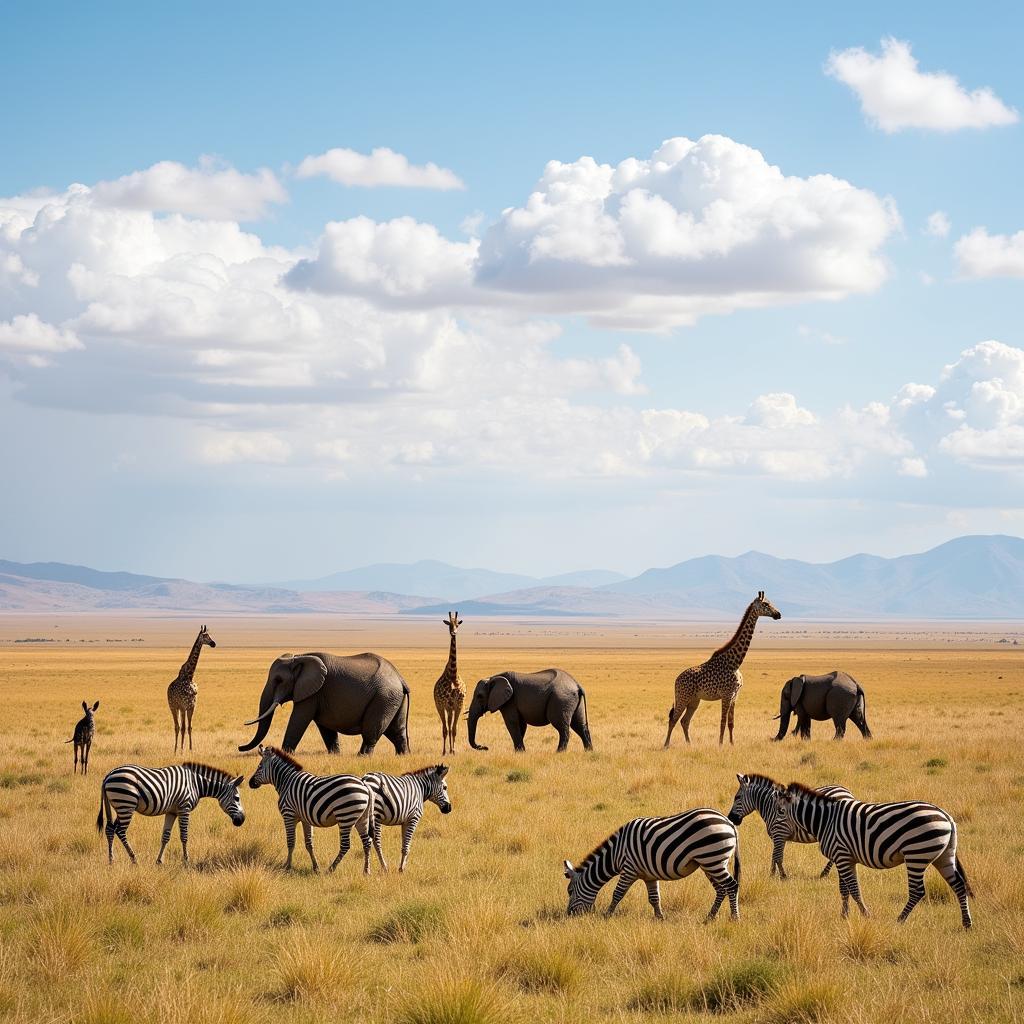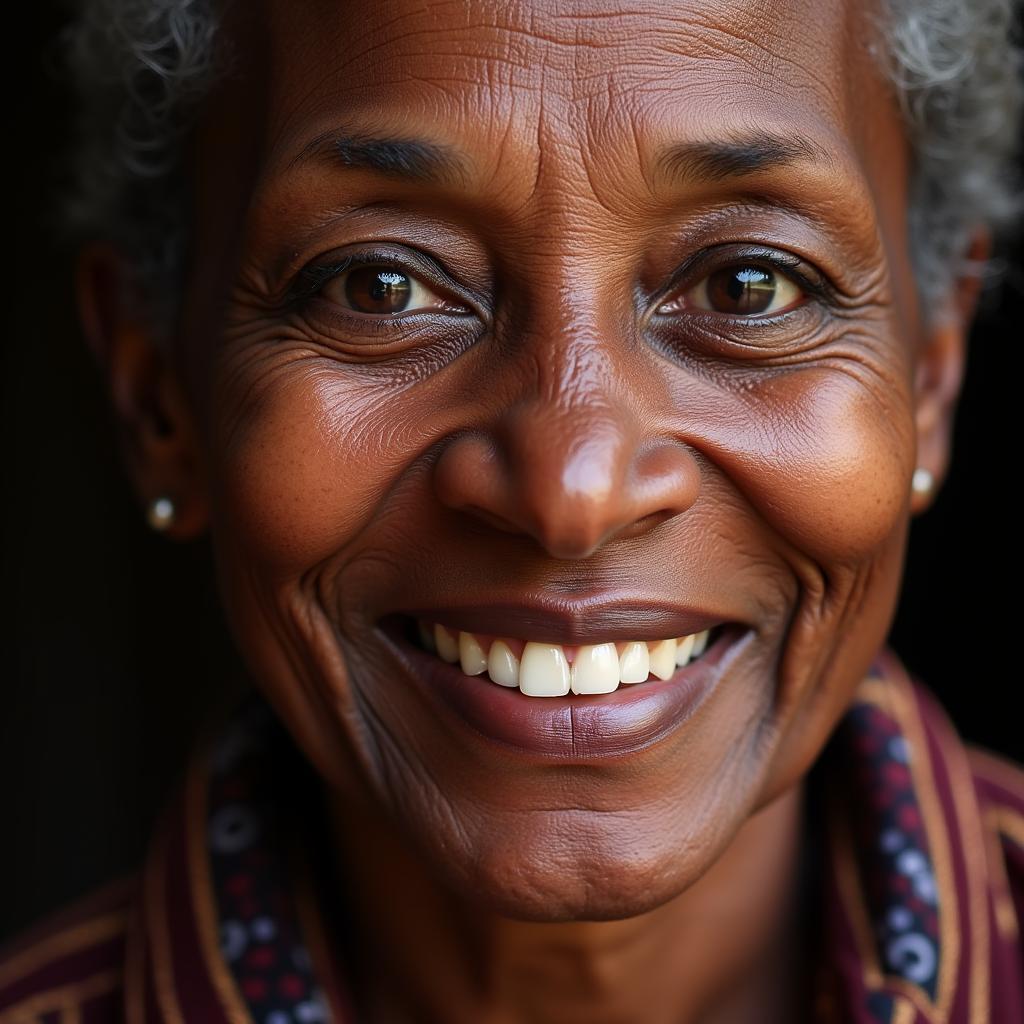African Animal Sculptures: A Journey Through Art, Culture, and History
African Animal Sculptures are more than just decorative objects. They are powerful expressions of creativity, spirituality, and cultural identity, reflecting the continent’s deep connection with the animal kingdom. From the majestic lion to the humble dung beetle, each animal holds symbolic meaning, woven into the very fabric of African societies.
Unveiling the Significance of African Animal Sculptures
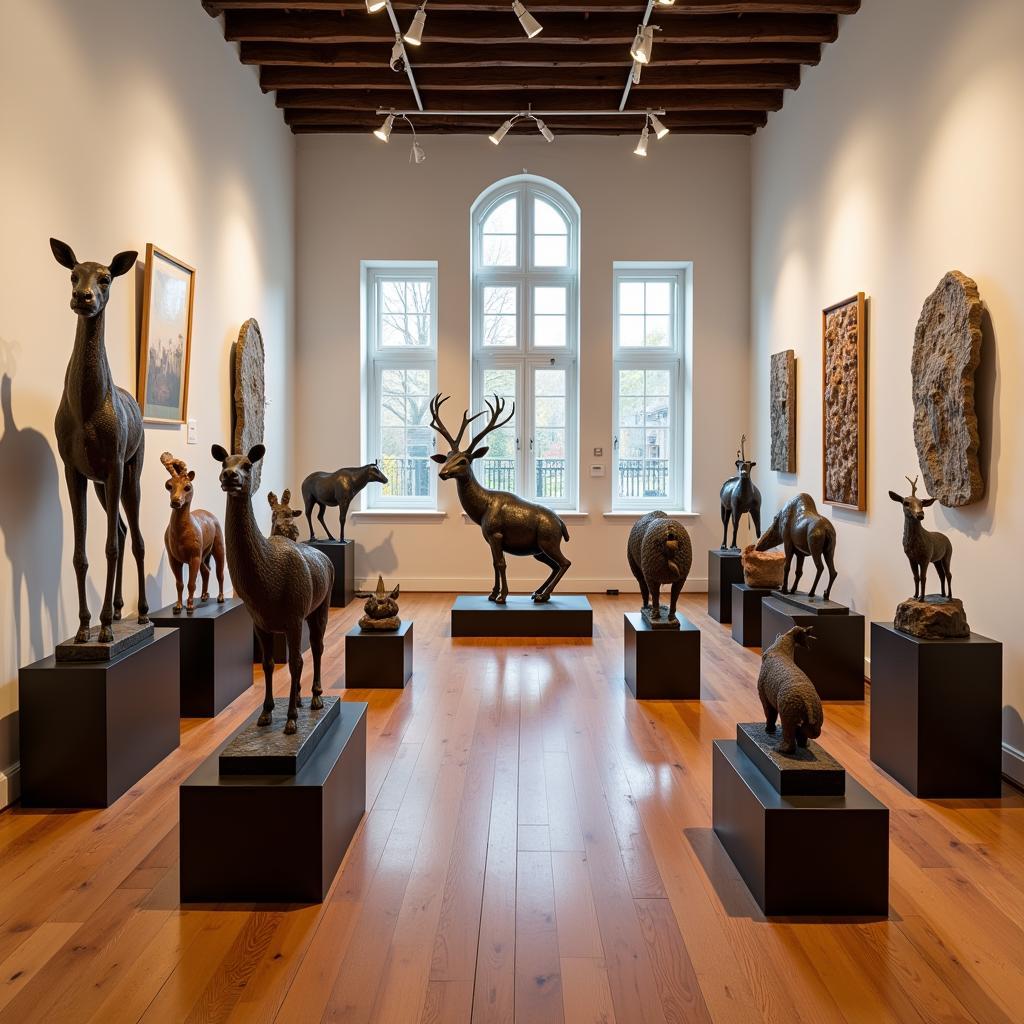 African animal sculpture exhibition showcasing diverse styles and materials
African animal sculpture exhibition showcasing diverse styles and materials
For centuries, African artists have transformed natural materials like wood, bronze, and ivory into stunning representations of animals. These sculptures serve various purposes, from ceremonial objects in rituals and traditional practices to decorative pieces adorning homes and palaces. Each animal depiction carries symbolic weight, embodying specific virtues, characteristics, and spiritual beliefs.
For instance, the lion, often depicted in a regal pose, symbolizes strength, power, and leadership. Many cultures associate the elephant with wisdom, longevity, and good fortune, while the graceful antelope embodies grace, agility, and feminine energy. These symbolic interpretations are often passed down through generations, keeping cultural narratives and traditions alive.
Exploring Different Styles and Regions
African animal sculptures are as diverse as the continent itself. Different regions and ethnic groups have developed unique styles, each distinguished by its specific aesthetic characteristics and materials.
- West Africa: Known for its bronze sculptures, particularly in Benin and Yoruba art. These pieces often depict royal figures alongside powerful animals, reflecting the close relationship between power and the natural world.
- Central Africa: Famous for its expressive masks and figures, often used in rituals and ceremonies. These pieces frequently depict animals with exaggerated features and bold geometric designs.
- East Africa: Recognized for its use of wood and soapstone in creating sculptures. Maasai beadwork often incorporates animal motifs, signifying social status and cultural identity.
- Southern Africa: Celebrated for its intricate carvings, frequently depicting animals in their natural habitats. These sculptures often exhibit a keen observation of animal behavior and anatomy.
African Animal Sculptures in the Modern World
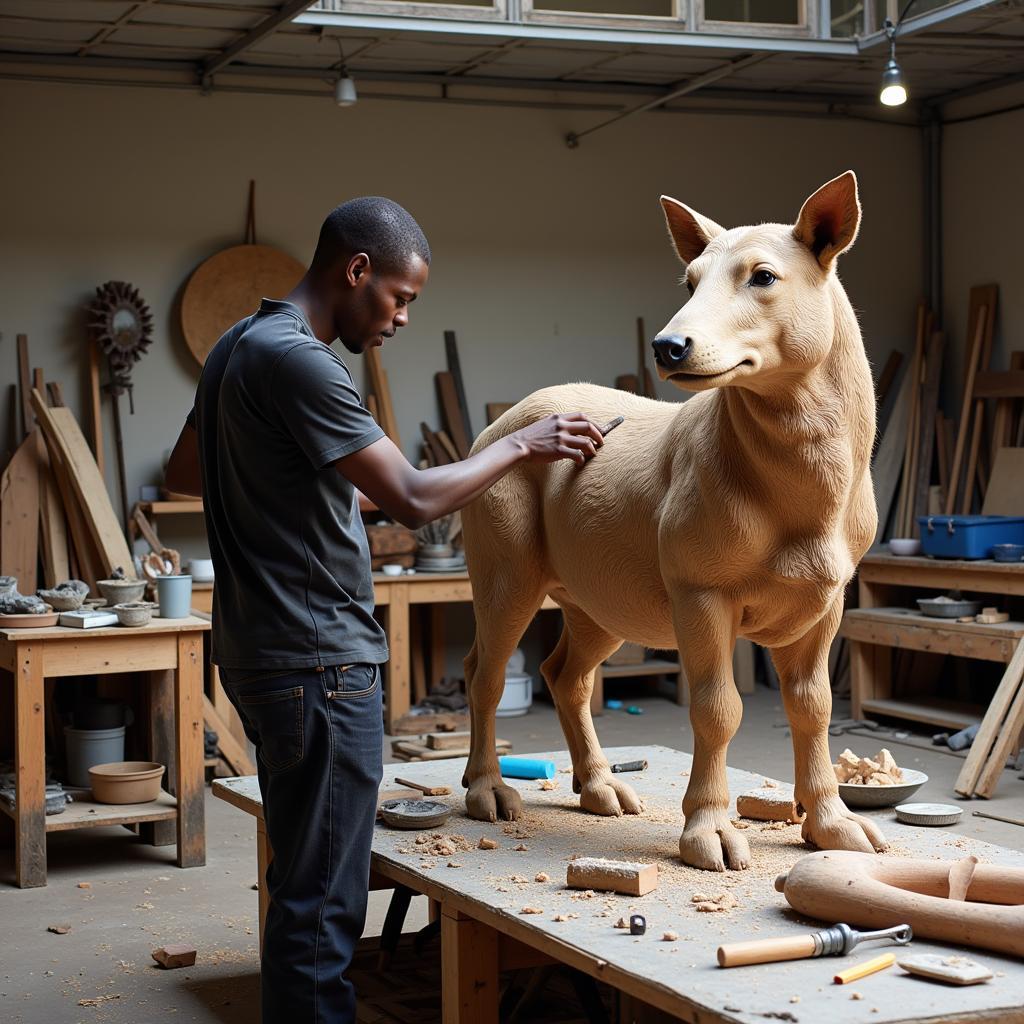 Contemporary African artist working on an animal sculpture in their studio
Contemporary African artist working on an animal sculpture in their studio
Today, African animal sculptures continue to captivate art enthusiasts and collectors worldwide. Contemporary artists are reinterpreting traditional forms, infusing their work with modern sensibilities and global perspectives. These artists address contemporary issues through their art, raising awareness about wildlife conservation, cultural preservation, and social justice.
The enduring appeal of African animal sculptures lies in their ability to connect us to the continent’s rich artistic heritage and the natural world. These sculptures serve as a reminder of the intricate relationship between humans and animals, inviting us to appreciate the beauty, power, and symbolism embodied within each creation.
FAQs About African Animal Sculptures
What are African animal sculptures made of?
African animal sculptures are crafted from a variety of materials, including wood, bronze, ivory, soapstone, and terracotta. The choice of material often depends on regional availability, artistic tradition, and the intended purpose of the sculpture.
What is the significance of animals in African art?
Animals hold profound symbolic meaning in African art, representing different virtues, spiritual beliefs, and cultural values. They are often seen as intermediaries between the human and spirit worlds, playing essential roles in rituals, ceremonies, and everyday life.
Are African animal sculptures still made today?
Yes, African animal sculptures continue to be made today by both traditional artisans and contemporary artists. While some artists maintain traditional techniques and styles, others are exploring new forms of expression, incorporating modern materials and addressing contemporary themes.
Where can I see and purchase authentic African animal sculptures?
You can find authentic African animal sculptures in reputable art galleries, museums, and cultural centers worldwide. When purchasing, it’s essential to buy from reputable dealers who can provide information about the sculpture’s origin, artist, and cultural significance.
Looking for More on African Art and Culture?
Interested in learning about other facets of African art and culture? Explore more about African lion names male, delve into the symbolism of African art couple, or discover the beauty of African ivory carvings.
African animal sculptures offer a captivating glimpse into a world of artistic brilliance, cultural richness, and spiritual depth. These exquisite creations continue to inspire, educate, and captivate audiences across the globe, reminding us of the enduring power of art to bridge cultures and connect us to the natural world.
For inquiries or assistance, contact us at +255768904061, email us at [email protected], or visit our office at Mbarali DC Mawindi, Kangaga, Tanzania. We are available 24/7 to help you.
